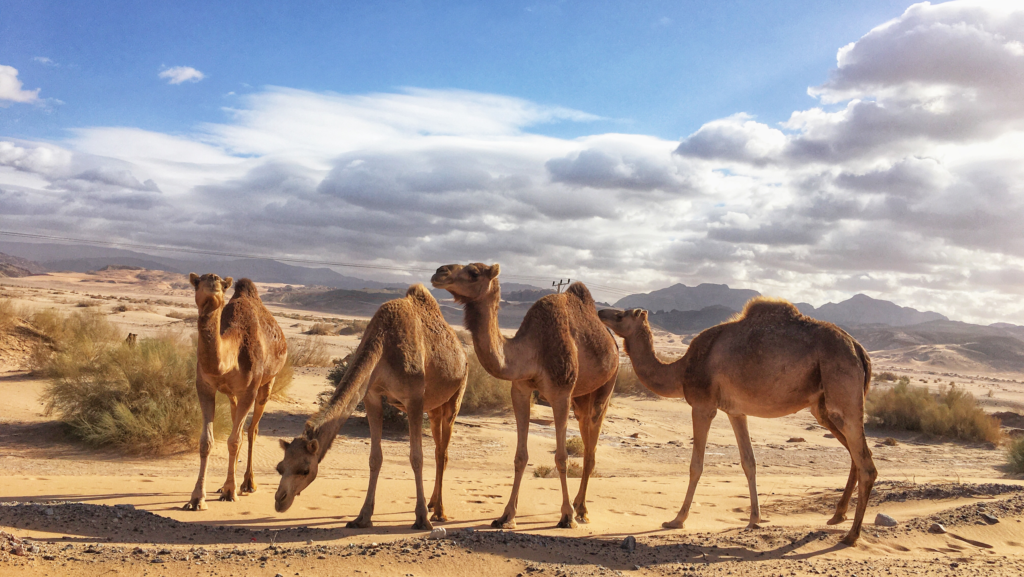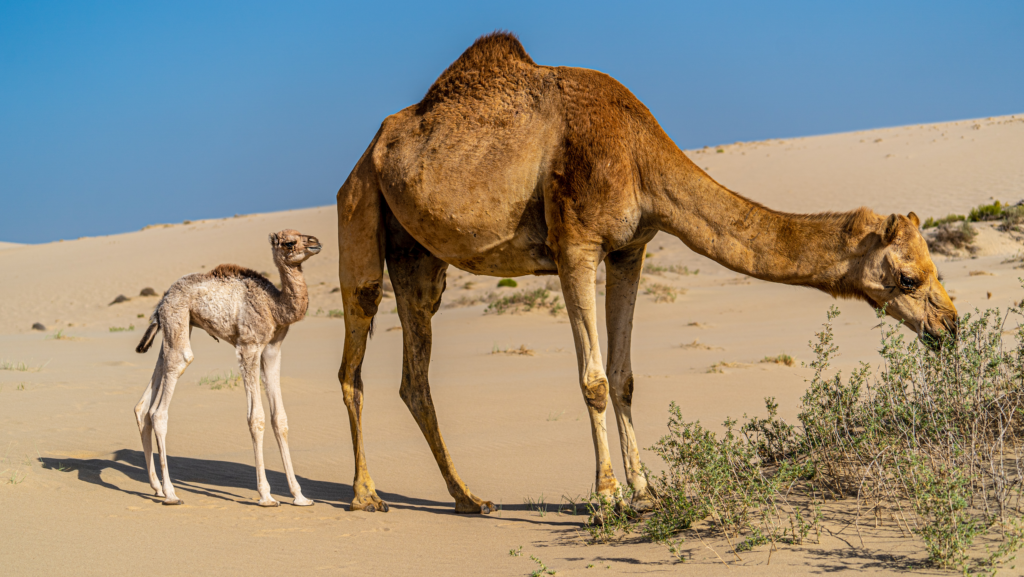Life Cycle of CAMEL: From Birth to Death

Birth: Camels, known as the “ships of the desert,” typically give birth to a single calf after a gestation period of about 12 to 14 months. The mother camel, or dromedary, carefully chooses a secluded spot to deliver her newborn. Calves are born with their eyes open and are able to stand and walk shortly after birth. They rely on their mother’s milk for nourishment during the early stages of life.

Grown Up: As the camel calf grows, it learns essential skills for survival in arid environments. Camels have distinctive features, including their humps, which store fat to provide energy during periods of food scarcity. While dromedaries have one hump, Bactrian camels, found in Central Asia, have two. Adult camels are well-adapted to the harsh conditions of deserts, with their long legs helping them navigate sandy terrain and their broad, tough feet protecting against the heat.
Life: Camels are highly resilient animals, perfectly suited for life in arid regions. They can endure extreme temperatures, from scorching heat during the day to freezing cold nights. Their ability to go for long periods without water and their efficient digestion system, which conserves moisture from food, make them well-suited for desert life. Camels are used by humans for transportation, as pack animals, and for their milk and meat.

Food and Habitat: Camels are herbivores and feed on a variety of vegetation, including tough desert plants. Their specialized mouths and teeth allow them to consume thorny plants that would be challenging for other animals. Camels can be found in diverse habitats, from deserts and steppes to grasslands. Their ability to adapt to different environments has contributed to their widespread distribution.
Reproduction: Camels reach sexual maturity between three and five years of age. Female camels typically have one calf every two years. The mating season usually occurs during the cooler months to ensure that the calves are born during more favorable conditions. Camels are known for their unique mating rituals, which involve vocalizations, posturing, and sometimes aggressive behavior.

Death: Camels, like all living beings, face the inevitability of death. In the wild, their lifespan is around 20 to 40 years, depending on factors such as environmental conditions and access to resources. Threats to camels include predators, diseases, and, in some regions, habitat loss due to human activities. In domestic settings, their lifespan may be influenced by factors like care, workload, and living conditions.
The camel’s life cycle is a testament to the remarkable adaptations that have allowed this resilient species to thrive in some of the world’s harshest environments. From birth to maturity, camels navigate the challenges of their habitats, providing invaluable support to human communities along the way.

